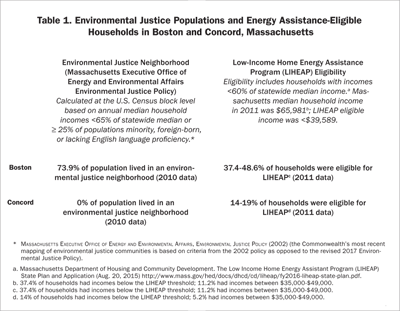“My administration is putting an end to the War on Coal. . . . I made them this promise: we will put our miners back to work.” President Donald Trump’s war meme first emerged as a political strategy to defeat candidate Barack Obama during the 2008 presidential election. After Obama prevailed in that contest, coal and power industry executives, lawyers, lobbyists, and coal-friendly politicians joined in a concerted effort to stall the administration’s regulatory initiatives aimed at scaling back coal mining and coal-fired power plant pollution.
Tens of millions of dollars from coal interests were channeled to support print, radio, and television advertisements claiming the Obama EPA and Interior Department were engaged in job-killing and economy-snuffing. For example, Friends of Coal, an arm of a West Virginia coal trade association, warned, “Mining is a way of life and if it is stopped by the EPA it will kill the local economies and thousands will lose jobs!” The National Mining Association claimed in a radio ad that EPA’s Clean Power Plan regulation of coal power plant emissions would cause consumer electric bills to jump by 80 percent. The Washington Post’s fact checker column found the ad to be “a case study of how a trade group takes a snippet of congressional testimony and twists it out of proportion for political purposes.”
Robert Murray, CEO of leading producer Murray Energy, used War on Coal rhetoric, declaring, “We don’t have a climate change problem. It is not real and not scientifically based. It’s a theology. It’s politics. And it’s an agenda.” EPA is “packed . . . with radical environmentalists, never created a job in their lives, never produced anything for society, but sat there writing rules all day,” Murray charged.
Fact-bereft slogans and sound bites aside, agencies administering and enforcing environmental laws regulating mining operations and power plants definitely have an agenda — one mandated by Congress via statute. It is regulatory agencies’ fundamental responsibility to limit the negative economic and social externalities of industrial pollution.
When a coal company discharges acid mine drainage or selenium, contaminating a watershed, or a power plant emits mercury, acid precipitation, or climate changing air pollutants, the per-ton price of coal excludes these health, esthetic, social, and environmental costs. Such regulatory actions actually promote healthy energy market competition. Absent effective regulation, companies whose mining waste is dumped into streams and power companies who burn the fuel and whose stacks belch greenhouse gases pay nothing to use local communities and the environment generally to dispose of their waste.
The industry’s attack on Obama regulations represented its time-tested strategy of denial, or minimization, of the externalized costs of coal. The anti-regulatory War on Coal campaign is neither new, nor uncharacteristic of the mineral’s promoters. For decades the industry touted the fuel as America’s most affordable, dependable energy resource. More recently, advocates disingenuously promote “clean coal” as an essential element of national security and the reliability of the U.S. electricity grid.
There is a measure of genuineness to the affordability claim — prices remained artificially low for generations because they failed to reflect the true costs of the pollution caused by mining and burning the fuel. Mining did put bread on tables, provided a decent living, and contributed substantially to local economies when the coal market was in one of its periodic boom phases. But it is also indisputable that, for more than a century, coalfield communities have been plagued by a market-controlled, debilitating economic cycle of boom and bust. There has never been broad-based prosperity in coal country. Rather, under-funded schools and public services, high unemployment, and meager employment opportunities beyond minimum wage jobs have long been the reality in communities where, historians say, coal was king.
A brief examination of regulatory actions demonized by pro-coal interests is revealing. The Obama EPA was not intent on destroying coal jobs. Rather, environmental regulatory agencies acted in good faith to enforce the Clean Air, Clean Water, Surface Mining Control and Reclamation, and Resource Conservation and Recovery acts. These laws were passed after decades of virtually unregulated industrial emissions, rationalized by polluters with maxims like “dilution is the solution to pollution” and “where there’s smoke there’s jobs.” The new laws passed in the 1970s were intended to cut harmful air, water, and toxic pollution by mandating environmental regulators to focus on internalizing the costs of pollution the power generation sector had dodged for decades.
Rather than seeking to comply with measures that would limit pollution, coal interests most recently attacked the Obama EPA’s Stream Protection Rule that limited waste discharged into Appalachian headwater streams — the remains of ridgetops blasted apart by huge mountaintop removal strip mining operations.
Also targeted were the Mercury and Air Toxics Standards. EPA analysis reported that these new standards would forestall up to 11,000 premature deaths, 4,700 heart attacks, and 130,000 asthma attacks every year. The agency found that the value of the rule’s air quality improvements for human health totaled $37 billion to $90 billion each year. That means for every dollar spent to reduce this pollution, Americans get up to $9 in health benefits.
A rule intended to prevent coal ash containing mercury, cadmium, arsenic, and other heavy metals from contaminating surface and groundwater was condemned as part of the War on Coal, notwithstanding the fact that for decades millions of tons of these power plant wastes had been discarded annually in hundreds of unlined landfills and impoundments across the country.
Coal interests’ most strident denunciation of EPA regulation was reserved for the Clean Power Plan and Obama executive orders that paved the way for the United States to join 195 other nations in the Paris Agreement, described by the signatories as “for the first time [bringing] all nations into a common cause to undertake ambitious efforts to combat climate change and adapt to its effects.” Each of these measures have been nullified or are in the process of being withdrawn by the Trump administration.
The hyperbolic fact-bereft War on Coal slogans demonizing these Obama regulatory efforts served to obscure long-denied, yet irrefutable costs of unregulated and under-regulated mining and burning. Avoidance of those costs permitted artificially low pricing that for decades undercut coal’s energy market competitors. A 2011 New York Academy of Science study penetrated the myth of “cheap, affordable coal.” It examined each stage of the lifecycle of externalities, including extraction, transport, processing, and combustion, finding “multiple hazards for health and the environment.” The academy monetized the costs to the public, finding the total as “a third to over one-half of a trillion dollars annually.”
The academy’s study emphasized that many of the externalities are cumulative. It explained that “accounting for the damages conservatively doubles to triples the price of electricity from coal per kWh generated, making wind, solar, and other forms of non-fossil fuel power generation, along with investments in efficiency and electricity conservation methods, economically competitive.”
Yet for almost a century, the coal industry evaded regulation. Even after the accumulated externalized costs of coal were realized, and addressed by Congresses in the 1970s that enacted environmental and mine safety laws, coal executives tasked their lobbyists and lawyers to repeatedly challenge agency efforts by administrations of both parties to implement and enforce those laws.
This history informs an understanding of the War on Coal strategy. The meme fired-up 2016 political campaigns and inflamed voter passions. Candidate Trump and friends of coal in both political parties curried voter favor by out-demagoguing each other in a scramble to show who hates regulation and loves miners the most.
During the campaign, Trump called climate change a hoax. Obama’s efforts to regulate carbon dioxide was “an overreach that punishes rather than helps Americans.” At campaign events in the coal regions of West Virginia, Kentucky, Ohio, and Pennsylvania, he promised to bring back mining jobs — part of his plan to “make America great again.”
On one level, the War on Coal meme contains a kernel of truth. Coal production and employment had, indeed, declined significantly during the Obama years. However, the cause for the decline had little to do with government regulation. An inconvenient fact coal interests conceal is that the mining workforce has been decimated by the industry itself. Companies shed thousands of workers as mines grew increasingly mechanized.
Three factoids from the Bureau of Labor Statistics illustrates a trend. During the Reagan and Bush I presidencies, coal jobs dropped from 242,000 to 144,000. Coal mining jobs in Appalachia dropped 60 percent from 1985 to 2000. Industry employment slipped from 73,000 in 2000 to about 52,000 today.
Notwithstanding these huge job losses, mechanization drove production higher and higher. For several decades, coal garnered half of the electric generation market. The War on Coal meme blames regulation on its recent fall from grace as the fuel of choice for electricity generation. Not mentioned was the emergence of cheap shale gas. Beginning in 2010, gas rapidly seized market share, culminating in 2017, when it dethroned coal as the dominant fuel used to generate electricity. Natural gas’s advantage over coal’s remaining stake is predicted by the Energy Information Administration to continue in the future, and the emergence of gas-powered electricity has decreased the amount of carbon required for each unit of economic activity.
Beyond the surge of cheap natural gas, the cost of renewables — wind, solar, and hydro — continues to drop. Utilities are progressively integrating these carbon-free sources of generation into their portfolios, to the exclusion of coal plants. Wind and solar power represents two-thirds of all new electricity-generating capacity, and in some parts of the country they are cheap enough to compete with natural gas.
Many large U.S. utilities are rapidly shuttering power plants fueled by coal and switching to these alternatives. American Electric Power Corp., one of the country’s biggest utility companies, is “not planning to build any additional coal facilities,” according to spokeswoman Melissa McHenry, who added that “the future for coal is dictated by economics . . . and you can’t make those kinds of investments based on one administration’s politics.” Coal-fired plants comprise 47 percent of AEP’s capacity for power generation; it plans to reduce its use of coal plants to 33 percent by 2030.
Other factors contributing to plunging production and mining employment include depletion of the economically minable reserves in Appalachia and declining demand for exports. Moreover, Resources for the Future researchers report that “between 2002 and 2012, real per-ton extraction costs in Appalachia nearly doubled.”
The War on Coal attack on environmental regulation allows the industry to obscure another reason for sharply declining production and mining jobs. The five biggest U.S. coal companies sought bankruptcy protection in 2015 and 2016. Bankruptcy was not triggered by an increasing regulatory burden. In fact, company managers saw gold at the end of the rainbow in the form of skyrocketing commodity prices at the beginning of the century’s second decade. Acquiring other companies and their reserves when the price of coal hit historic highs, these companies assumed billions of dollars of leveraged debt.
When prices nose-dived, they could not service the huge debt that financed their buying spree. It was not a coincidence that the speculation-fueled bankruptcies coincided with the companies’ mine closures and termination of thousands of jobs. Major producer Murray Energy did not follow the acquisition stampede. Its CEO “watched it go on and shook my head . . . everyone was shoving liabilities to someone else.” As a consequence of these bankruptcies, more than 100,000 miners and their widows lost or may lose their pensions and health care benefits earned by decades of arduous work — blamed of course, on the War on Coal.
After the inauguration, the Trump administration charged out of the box to fulfill its campaign promises — notwithstanding the fact the coal industry was rapidly contracting as a result of competition and irresponsible market speculation. The new president ordered withdrawal from the Paris Agreement, killed President Obama’s Clean Power Plan, ditched limits on dumping power plant waste into streams, and is “reevaluating” regulation of toxic coal ash disposal.
Explaining his decision to pull out of the Paris Agreement, the new president explained it would result in “lost jobs, lower wages, shuttered factories, and vastly diminished economic production.” Trump cited statistics produced by an economic model that projected the impact of the accord: by 2040, gross domestic product would decline by $3 trillion dollars, 6.2 million industrial sector jobs would be lost, and coal production would drop by 86 percent. Scholars found the model to be flawed. Yale economics professor Kenneth Gillingham observed that it was based on cherry-picked data and ignored the benefits of reducing greenhouse gas emissions.
Attending the flurry of presidential executive orders and agency actions reviewing, withdrawing from, or canceling Obama regulatory initiatives, Trump touted a seeming miraculous recovery of thousands of coal jobs. Signing an executive order surrounded by miners, the president announced, “I made my promise and I keep my promise. . . . We’re ending the theft of American prosperity and rebuilding our beloved country.” Vice President Mike Pence added, “The War on Coal is over.”
Interviewed on Meet the Press, then EPA Administrator Scott Pruitt claimed that “since the fourth quarter [of 2016] we’ve added almost 50,000 jobs in the coal sector, in the month of May [2017] alone almost 7,000 jobs.” A month later, Trump drew cheers from a miner-dominated rally when he declared, “Everybody was saying, ‘Well, you won’t get any mining jobs.’ We picked up 45,000 mining jobs. Well, the miners are very happy with Trump,” the president told the energized audience. In announcing the opening of a new mine that would employ just 80 miners in Pennsylvania, Trump exalted: “The mines are starting to open up, having a big opening in two weeks. Pennsylvania, Ohio, West Virginia, so many places. A big opening of a brand-new mine. It’s unheard of. For many, many years that hasn’t happened.”
American Coal Council CEO Betsy Monseu attempted to reinforce the message. “Changes in policy, regulations, and markets are already contributing to a stronger domestic coal industry,” affording “a path to sustainability and the ability to compete that simply wasn’t there in recent years prior, with the continuing threats of the Obama-era regulations.”
The claim that the fuel’s ability to compete had been strengthened and new mines are opening for the first time in many years was demonstrably erroneous. Contrary to claims of growing jobs, a Greene County, Pennsylvania, mine permanently shut down in January with the loss of 370 jobs “because the aging of the mine and adverse geological conditions . . . impaired the productivity of the mine and forced higher production costs.” A manager explained that “under these conditions, the mine is uncompetitive and not sustainable in today’s coal and electricity markets.”
To be clear, while government statistics do report a marginal increase in production and mining jobs in 2017, energy economic experts and even some industry executives concede that a return to the record high levels of the 1990s is not in the cards. Nor do they see any scenario in which mine production and coal-related employment will rebound to offset the thousands of jobs shed as gas and renewables surge. Reuters reports that full-year coal employment data from the Mining Health and Safety Administration shows total U.S. coal mining jobs grew by a meager 771 during 2017, not the 50,000 that Pruitt claimed.
The Energy Information Agency forecast in December “sluggish power demand, abundant gas supply and renewables growth . . . to continue to generate headwinds for coal use and limit the prospects for any resurgence in construction of new coal power plants.” The agency predicted demand for coal to decline 1 percent per year on average over the next five years.
The Institute for Energy Economics and Financial Analysis recently predicted that “potential benefits from regulatory relief that has been promised by the new administration will provide little or no gain and the long-term prognosis for the industry in every region from now through 2050 is poor, as more coal-fired power plants will close and as utilities will continue to allocate capital away from coal.”
Thus, the Trump administration’s victory lap celebrating the deregulatory policies promised to put miners back to work is as much myth as its War on Coal meme.
Ironically for an administration pledged to deregulate, Energy Secretary Rick Perry proposed a rule in September 2017 that would disrupt electricity markets in order to subsidize coal-burning power plants scheduled for closure by their owners because they cannot compete with lower priced natural gas and renewable energy.
Research by the Energy Innovation and the Climate Policy Initiative pegged the cost of the proposed rule at “up to $10.6 billion annually . . . paid by U.S. businesses and residents and this subsidy would flow to roughly 10 companies and 90 power plants, and harm cheaper generation from natural gas and renewables.” Fortune reported that Trump’s proposed subsidy rule was opposed by the great majority of the U.S. power industry, “From market operators and conservative analysts to a bipartisan group of former FERC commissioners — except for those who would directly benefit from it.”
The five-member Federal Energy Regulatory Commission, four of whom are Trump appointees, rejected the proposed rule as contrary to the core tenet of its two decade-long policy of “support for markets and market-based solutions.” The FERC ruling emphasized that “under this pro-competition, market-driven system, owners of generating facilities that are unable to remain economic in the market may take steps to retire or mothball their facilities.”
Notwithstanding FERC’s rejection of Perry and Trump’s subsidy plan, efforts to prop up noncompetitive coal-fired power plants continue unabated. FirstEnergy Corp, whose subsidiaries operate nuclear and coal-fired generating plants facing bankruptcy, requested in late March that Perry immediately intervene and issue an emergency order under Section 202(c) of the Federal Power Act. The company asserted that “the very diversity of supply that baseload nuclear and coal-fired units provide is being lost more and more each day as more and more of these plants retire because their fuel security and resiliency are not properly recognized and valued.” The requested order would direct that FirstEnergy and other companies’ coal-fired and nuclear power plants be paid subsidies “for the full benefits they provide to energy markets and the public at large, including fuel security and diversity.”
Immediate criticism of the requested bailout came from such diverse groups as the National Gas Supply Association, the American Petroleum Institute, and the Sierra Club. “FirstEnergy’s latest attempt to spread a false narrative surrounding the reliability of the electric grid is nothing more than a ruse that will force Main Street consumers to pay higher prices,” said Todd Snitchler, director of API’s market development group.
Dena Wiggins, president and CEO of NGSA, emphasized that Section 202(c) is intended to be triggered by extreme power grid emergencies that, as the Trump-appointee-dominated FERC found earlier, do not exist. “Competitive markets have a long track record of delivering affordable power to customers. It would be counterproductive and send the wrong signal to the market for DOE to grant this request,” Wiggins stressed.
Even more ironic, Bloomberg News reported that Trump administration officials were considering another market-disrupting proposal. Trump has been urged by industry and coal-state officials to exercise authority under the Defense Production Act of 1950 to keep noncompetitive coal power plants online. The DPA was enacted, however, to give President Truman extraordinary authority over the availability of domestic materials production crucial to support the Korean War effort and has never been used to pick winners and losers in domestic energy markets.
Having “won” the War on Coal, the Trump administration and coal interests now seek not only to negate Obama’s effort to force internalization of the fuel’s true costs, but to subsidize coal use to protect the energy source from having to compete in a free-market environment against more affordable gas and renewables. But the War on Coal meme and the myth that the industry and coalfield communities are victims of job-killing regulation is dead. On the ground in mining communities, many recognize that while the fuel will continue to provide some employment, neither politicians’ promises nor a government bailout will allow production and miners’ jobs to return to historic levels. Given that reality, grassroots leaders in coal states are seeking creative ways to diversify their economies to provide educational and employment opportunities that did not exist when coal was king. TEF







